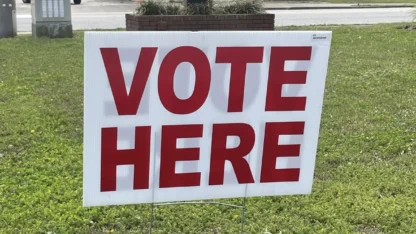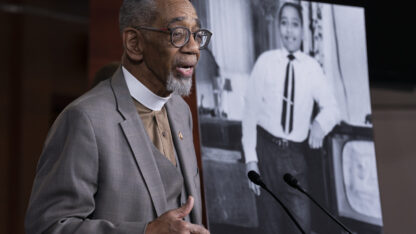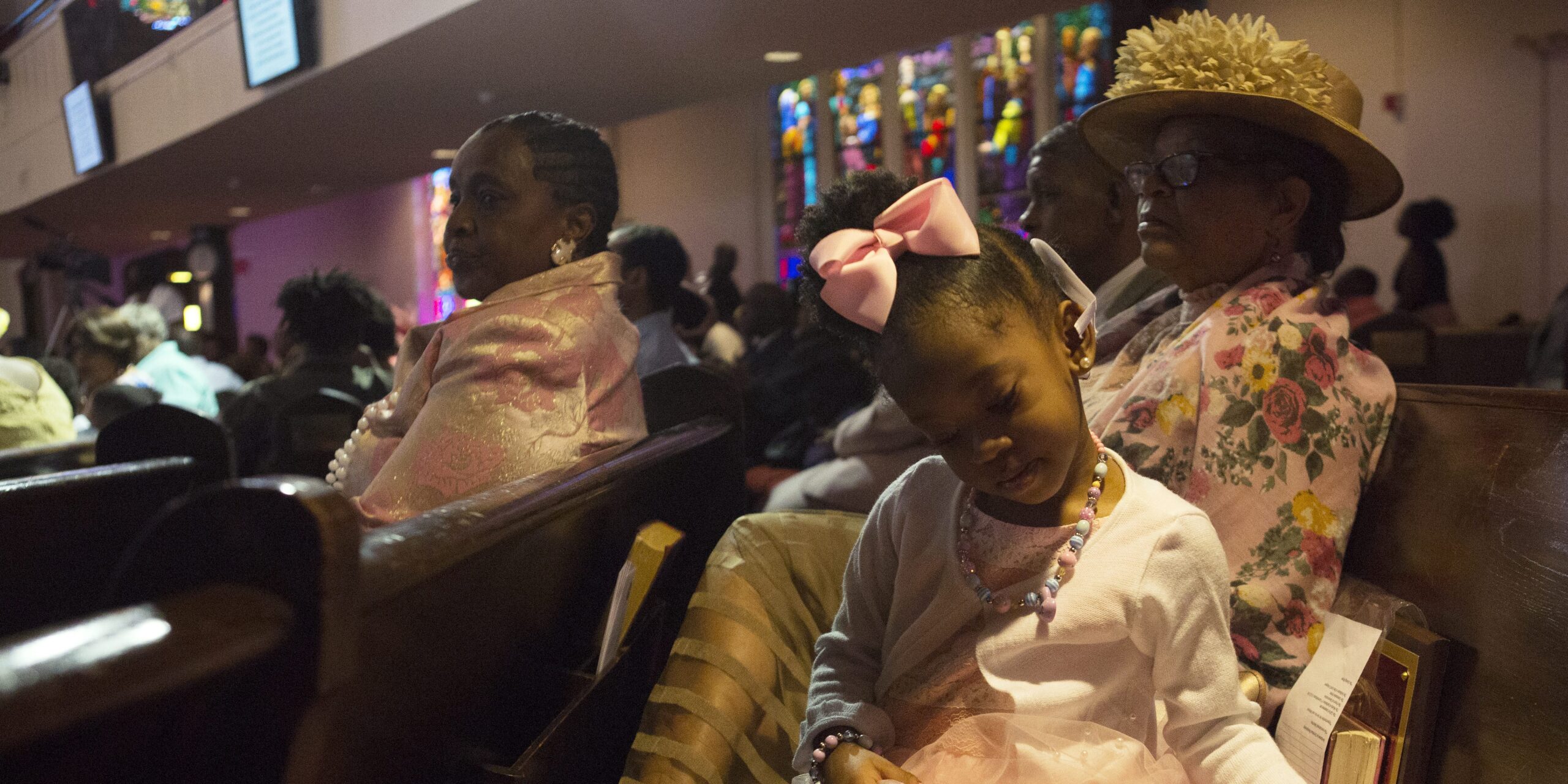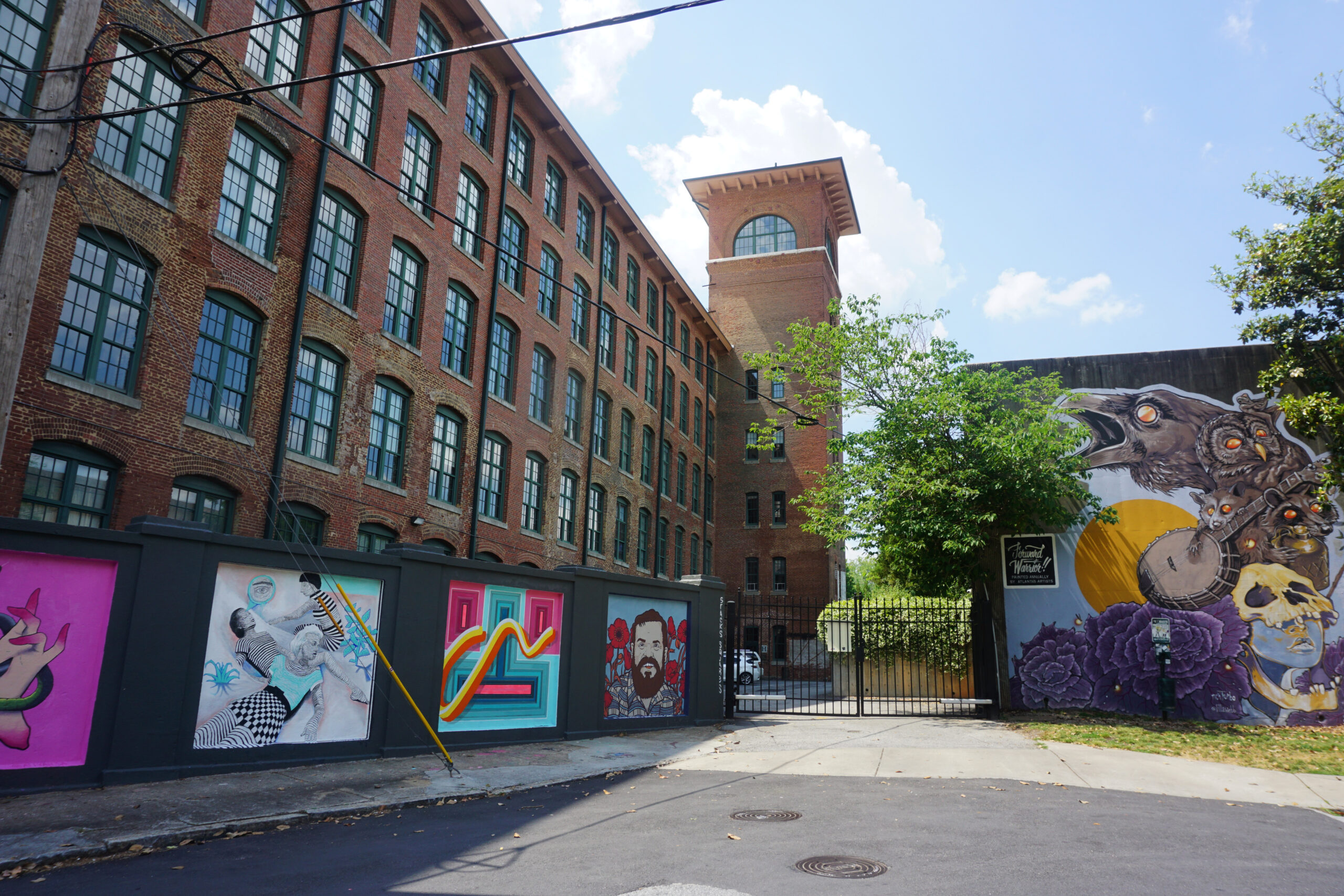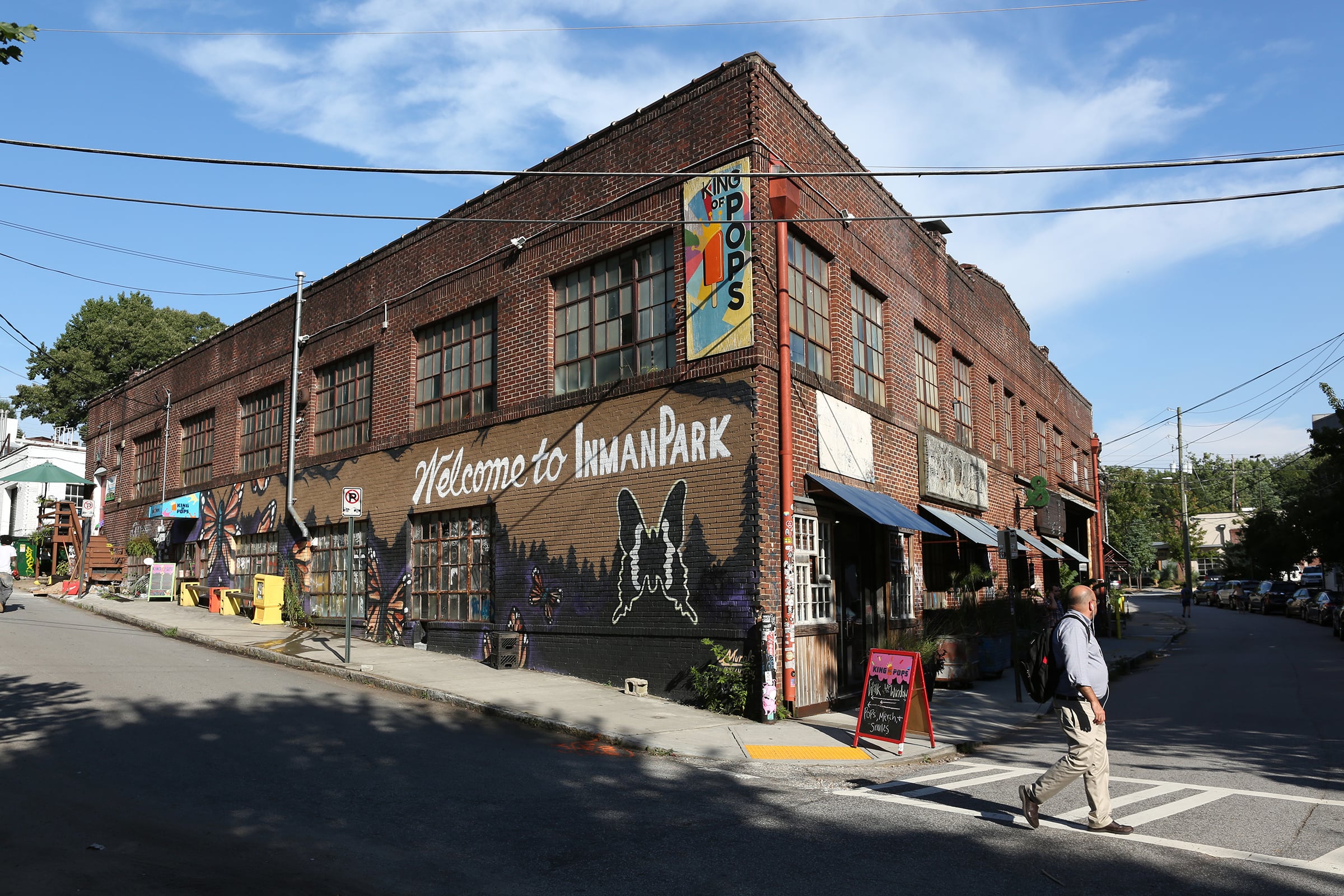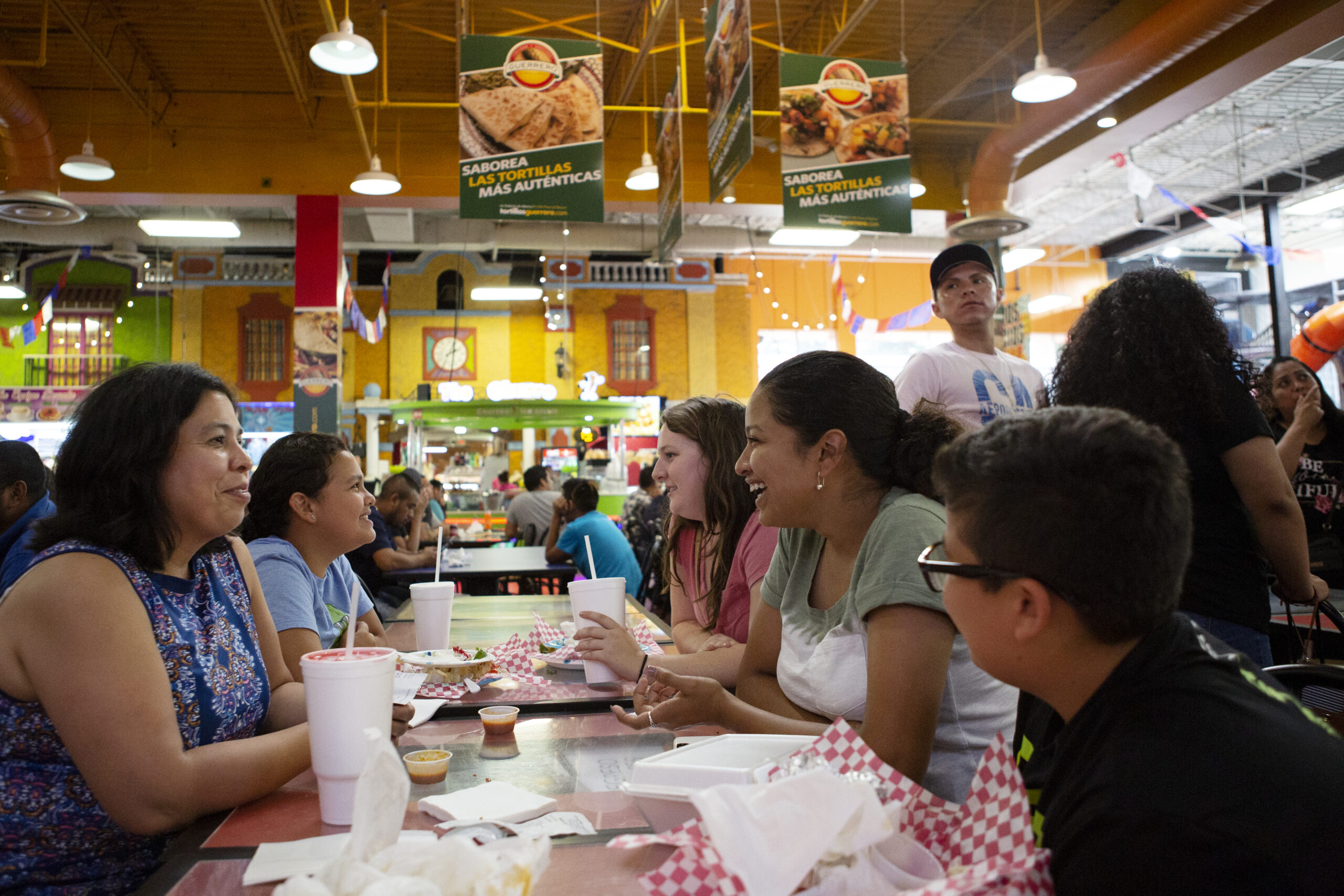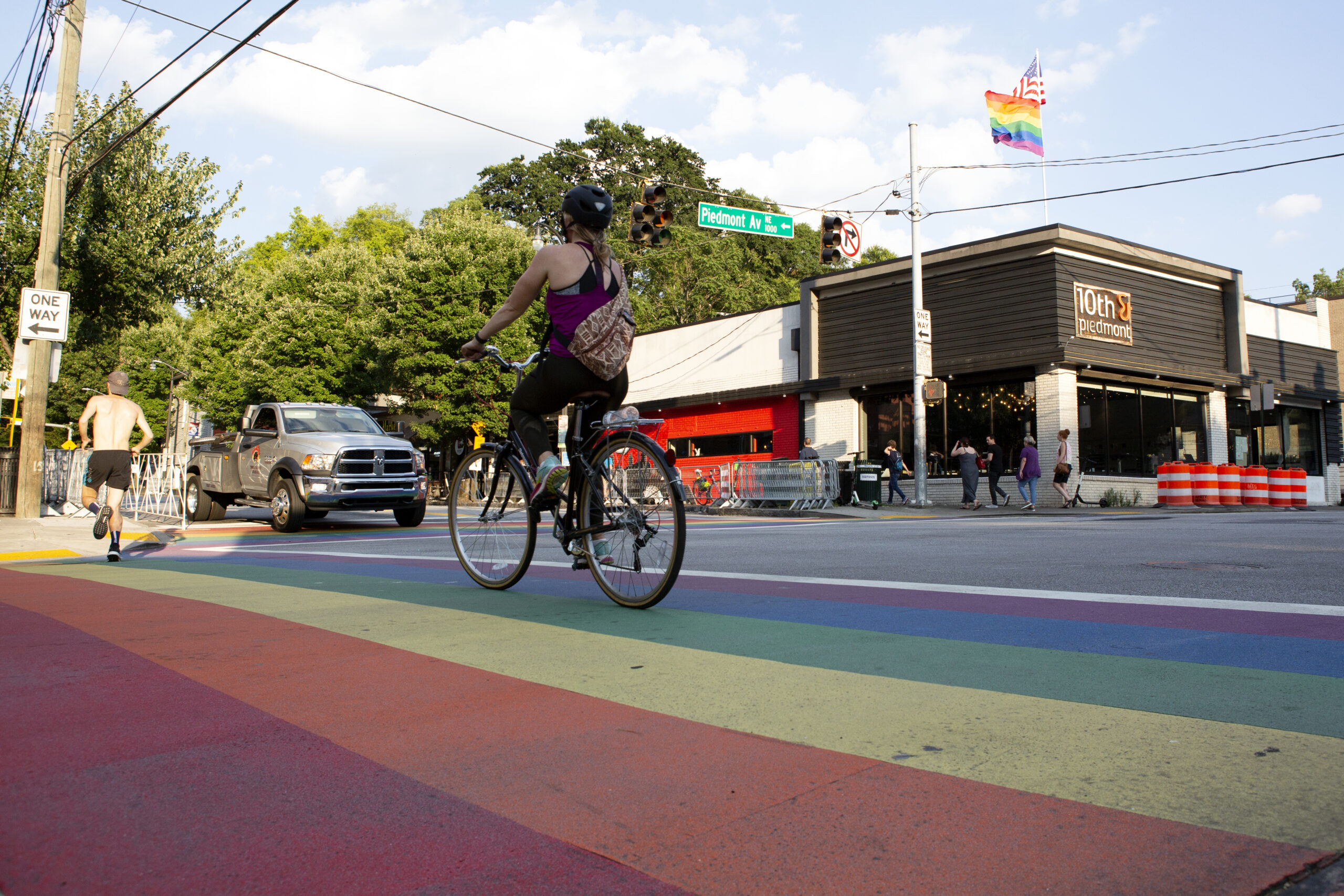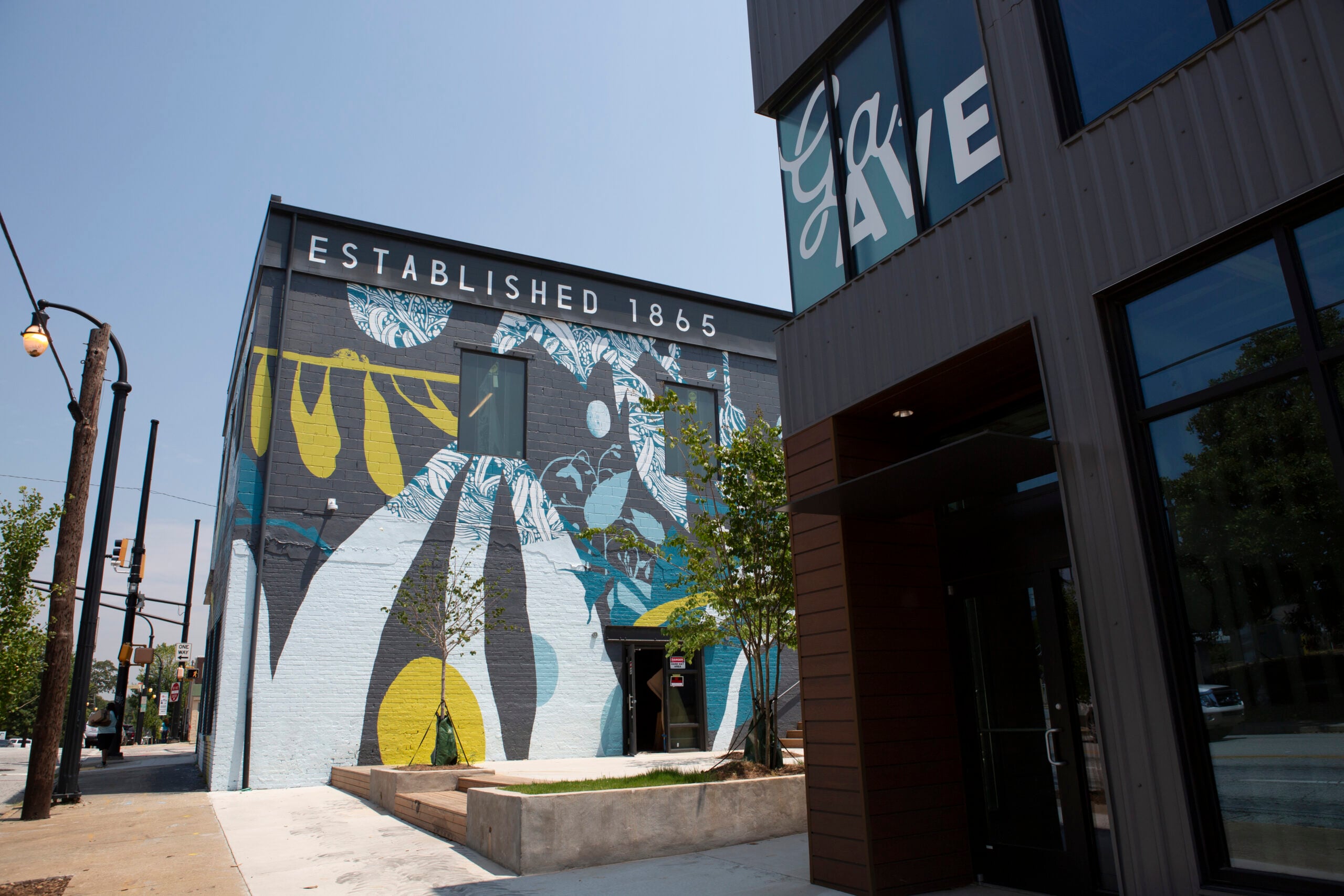One of the oldest homes in Atlanta is about a mile and a half south of downtown in a community called the West End. It’s a two-story greyish-blue home with white trim, a front porch, and a fireplace.
Oak trees shade the yard and stairs lead to the property from a charming brick sidewalk. The home sits back on its lot behind a wrought iron fence on Peeples Street, although that specific fence wasn’t there when the house was built in 1856.
The West End is older than the city of Atlanta itself, so it’s no surprise that this house is older than most of the structures in the city.
Before there was Marthasville, Terminus or Atlanta, there was the West End.
It might as well have been the western frontier. Horse drawn buggies rode down dirt and cobblestone streets.
As local historian Robert Thompson explains, across the river was a different country with a different constitution: the Cherokee nation.
Charner Humphries was one of the wealthy white men who settled in the West End. He bought land in 1835, two years before the site for Atlanta was located, according to a 1957 article in the West End Star.
Humphries purchased 14 acres at the corner of a popular trade route, at what is now the corner of Ralph David Abernathy Boulevard and Lee Street.
An account from 1902 describes the home he built as a “number of shanties, huddled together painted white, the only painted house in the country.” Older paintings and drawings show a two story home with six columns, a gable roof, and a two level front porch painted white. Thompson laughs at this image of a grand house and explains that it was probably much simpler all that time ago.
The common thread among all stories is that Humphries’ home was called “Whitehall.” Whatever it looked like, it is remembered as the only painted structure in the area at the time. It was painted white.
Whitehall was a lot of things for the community. It was a stopping place for travelers and traders. It became the post office when Humphries was appointed Postmaster in 1835 with a meager salary of $10.51 in 1838.
Whitehall doubled as a the headquarters for the general muster of the militia. The tavern was used as storage for guns and ammunition — a kind of early armory.
Humphries also ran a store across the street, in the same building where Atlanta’s first physician, Dr. Joshua Gilbert, had his practice.
Today the energy at the intersection is no longer rural, but hectic. People wait to cross and there are four lanes of cars going in either direction. The MARTA train frequently whirs past. A mural decorates the side of the wings restaurant at the corner of a long row of colorful businesses, some painted red, green, yellow and purple.
Catty-corner is a small plaque commemorating the placement of Charner Humphries’ home. Across the street is the long, bright, bland The Mall West End.
The Mall was designed to be accessible by the interstate as well as by people walking and was declared as “probably the only downtown mall in the United States — let alone Atlanta.” West End Resident and director of the Southwest Atlanta Association Edgar Schukraft had championed the project as an effort to spur economic development in the neighborhood in the 1970s.
The West End has as strong a sense of self as it does of community.
Cordero Childs, a barber at Barber Shop II in the West End Mall says, “This is definitely a cultural mecca. A lot of trends start here and reach out to the rest of the country.”
In its beginning, the West End attracted wealthy settlers. By 1840, gold had been found in Dahlonega and wealthy settlers were building big homes in the West End. With the railroad, the settlement became less and less rural.
Working with Colonel Richard Peters, Colonel George W. Adair, the namesake for Adair Park, built the first streetcar line in Atlanta, with horse drawn carriages traveling past both of their houses on Peters Street, starting at Whitehall Street and traveling to Spelman College.
Today’s MARTA routes mimic some of the earliest streetcar lines.
George Washington Adair established the trolly line connecting his own property in the West End to downtown Atlanta, but eventually moved the local business district from Whitehall to Five Points downtown.
By the turn of the 20th century, some of Atlanta’s most distinguished citizens called the West End home. As Lee May once wrote, the West End in the 1860s-1890s was a place where “big homes were built for big people.”
The only Georgia governor to serve four terms, Joseph E. Brown, lived on Ashby street and later went on to serve as a U.S. Senator before his death in 1894.
Joel Chandler Harris, a Constitution journalist and writer, known for preserving folk literature and stories he heard from slaves including the Uncle Remus stories, lived in a big home with a wrap-around porch still known as the Wren’s Nest where James Whitcomb Riley, Andrew Carnegie and Theodore Roosevelt were known to be visitors.
Evan P. Howell, another Constitution journalist and mayor of Atlanta, lived just down the street. His home had a beautiful lawn. While the house is no longer there, his property is now known as Howell Park.
These men were neighbors to Georgia’s first poet laureate Frank L. Stanton and chairman of Atlanta’s first board of health Elijah Lewis Connallys.
The West End would have remained an independent town if not for a fire that almost ruined the Wren’s Nest. Residents realized they needed a fire station and access to the city’s water.
After four years of waiting, the city of Atlanta annexed the West End in 1893. After 58 years of independence, West End residents got a fire station and access to Atlanta’s water, but only under the condition that they could continue the prohibition of the sale of liquor.
Under that one condition, the West End continued to prosper. Hints of this history remain in the architecture.
The big homes with multiple fireplaces and the stunning stained glass in St. Anthony’s Church are evidence of the immense amount of wealth in the neighborhood when the parish was built in 1903. The community was creative, intelligent and thriving.
But the depression came and caused many people to abandon their intown residences all over the city and by World War II, many had turned their homes into apartments.
By the time Wade Dubose Burns moved to the West End as a young architect in 1969, the neighborhood homeownership was very old and white with almost no debt on their property but also no income coming in to renovate the cracked ceilings, peeling paint, sagging floors and serious foundation issues that plagued the houses in the neighborhood.
By 1970, the West End was largely considered too far gone for urban renewal, because the cost to renovate the homes would be considered “overbuilding.”
It was barely less expensive to renovate the dilapidated Victorian homes than to build a new one.
In the 1960s, the West End was part of the city’s largest redevelopment project, with more than $14 million intended to restore and renovate homes.
Despite good intent, this initiative was largely seen as a failure by the time Burns moved in in 1969.
“Urban renewal was enough to patch and make repairs, but it’s kind of like fixing one of the fenders on a car that doesn’t have a transmission or brakes or so forth,” he said.
Burns saw past the cracked ceilings and sagging floors. Architecturally the homes had great potential. They had antique mantels, four or five fireplaces in a house, six inch moldings with rosettes, and pine floors.
He founded West End Restoration and over the next few years bought 25 homes and began restoring them, patching plaster and digging out stained glass windows from the walls.
“I was young and I had no idea what I was doing,” Burns laughs.
While he was smitten with the old homes, most of which were built from 1880-1910, it was impossible to ignore the reality of the neighborhood. He would describe the crime rate as “instantaneous.”
“It wasn’t until I was living on Peebles Street, in a little neighborhood that the Constitution described as, ‘it would otherwise have gone to hell in a handbasket,’ that I was experiencing the indignity of being treated poorly because of my address,” Burns said.
“A trashman threw the trash can at me one day because he knew he could.”
If you walk down Peebles Street today, you’ll notice the tall brickwork and wrought iron fences between the homes.
This “architecture between buildings” was Burns’ surprisingly friendly iconic solution to make residents feel safe on their front porch even if they were so close to the sidewalk.
The first person that purchased one of Burn’s renovated homes was the second Dean of Business of Atlanta University, Dr. Robert Vowells.
Lee May, Associate Editor of the Atlanta Constitution, and Linn May, a TV anchor in Boston bought another one of his homes.
Whitehouse fellow Larry Mock and Lee P. Brown, Police Commissioner of New York and the first African-American mayor of Houston, who went on to serve three terms, moved in and became neighbors.
Sharon Adams, Dean of Women at Emory at Oxford and Zell Miller’s chief adviser, moved into the West End.
By the 1980s, the neighborhood was predominantly black.
“I knew nothing about the civil rights movement. I had only briefly been in an integrated school one semester of my senior year,” Burns said of his time at Virginia Tech. “When I (went to) the West End, I (was) exposed to the most extraordinary people and leaders of the century.”
Despite this, it was nearly impossible to get funding for commercial development in the West End.
“My office above my garage behind my house was the tallest commercial building built since desegregation. You just could not get economic development in the black community,” Burns explains.
The late Edgar Shukraft, a mentor to Burns, had been trying to spur economic revival in the West End for years.
Schukraft watched urban renewal in New York in the 1950s and believed if they could concentrate on reviving the business district of the West End, residential renovation would follow.
As president of the West End Business Men’s Association, he brought in speakers to educate about urban renewal.
“I’m vitally interested in people staying in Atlanta,” Edgar Schukraft said in the 1970s. “I hope we’re going to set an example for a lot of other areas.”
Burns left the West End in 1999.
“I miss the intellectual energy and camaraderie of the Atlanta community. The leaders in the business community were just extraordinary,” Burns said. “If you were going to be a leader, you had to be a volunteer which meant you were the right kind of leader. People had a huge community interest and I miss that.”
It’s that same community feel that attracted Tony McNeal and Carlton Walker to their home in the West End more than a decade later.
Before moving to the West End, they had never lived in a community where they knew their neighbors. McNeal recalls that the first Friday after they moved in, they had 15 people over to their house and more than 30 stopped by on Sunday.
“The neighborhood is a community,” McNeal says.
If there is a new business, we support it. The community comes together.”
The economic boom that Schukraft and Burns believed would happen in the neighborhood is finally here.
With the official opening of the West Side BeltLine trail in September 2017, businesses have moved in along side it. Lean Draft House, Monday Night Brewing, Honeysuckle Gelato, and Wild Heaven among others.
But older businesses are still thriving.
Willie A. Watkins was drawn to the West End when he was starting his funeral home in the late 1970s, because he wanted it to have a big front porch.
“I wanted to find me a home that had a front porch on it, because when I used to go to funeral homes around the country, all of the white funeral homes had a front porch and rocking chairs and our funeral homes didn’t,” Watkins explains. “I wanted a nice funeral home.”
What started out as a small funeral home with Willie A. Watkins and his wife living upstairs has grown into multimillion dollar Willie A. Watkins, Funeral Home, Inc., with five locations that all have front porches with rocking chairs.
Jeffrey and Joseph Robinson Jr. took over their father’s architecture practice, J.W. Robinson & Associates, Inc. across the street from Willie A. Watkin’s flagship funeral home in the West End.
Their father worked tirelessly, teaching during the day and then growing his architecture practice on his own time working with his staff out of the basement in his home. Robinson, Sr. designed homes for Herman Russell and R.A. Banks among others.
During segregation, he saw how African Americans were living and he wanted to change that and went on to design over 200 homes. He designed houses where people could party and gather because at the time they weren’t allowed to in public spaces.
The brothers continue their father’s legacy and have also worked on the renovation of the Historic West End First Fire Station, Atlanta’s oldest fire station from 1910.
A trip to the West End would be remiss without tasting their long legacy of vegetarian and vegan restaurants.
The front porch is usually packed as the line winds outside at Tassili’s Raw Reality and regulars remain loyal to Soul Vegetarian Restaurant.
Healthful Essence has served Caribbean Vegan and Vegetarian food in their location behind Krispy Kreme for more than a decade. Meat eaters should check out Q-Time’s soul food.
The West End is now on the National Register of Historic Places.
The homes Wade Dubose Burns worked tirelessly to preserve are now protected.
Today’s residents meet quarterly for porch parties on the wide front porches of the historic homes to welcome new neighbors into the community.
In 1966, Bruce Galphin wrote about the crumbling homes that are now in mint condition, but he also wrote about the unique sense of community.
“West Enders are reluctant to abandon their identity with the area and drift to the suburbs as so many other Atlantans have done,” he wrote.
“Over the years they have shown a bulldog tenacity about their piece of Atlanta.”
Despite all the change that has happened in the neighborhood in the past few years, the neighbors remain committed to their diverse and inclusive community. Their ‘bulldog tenacity’ still rings true.

